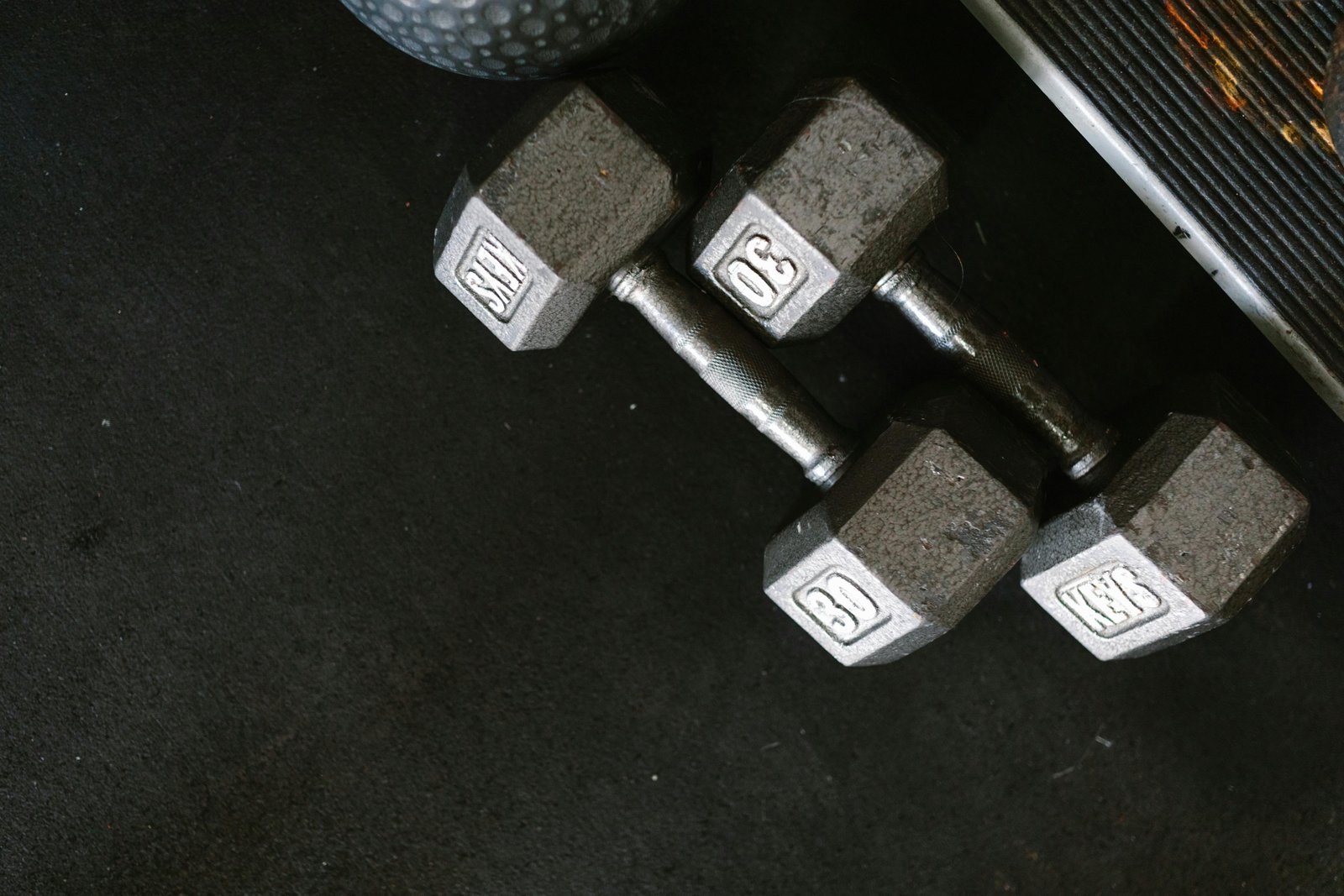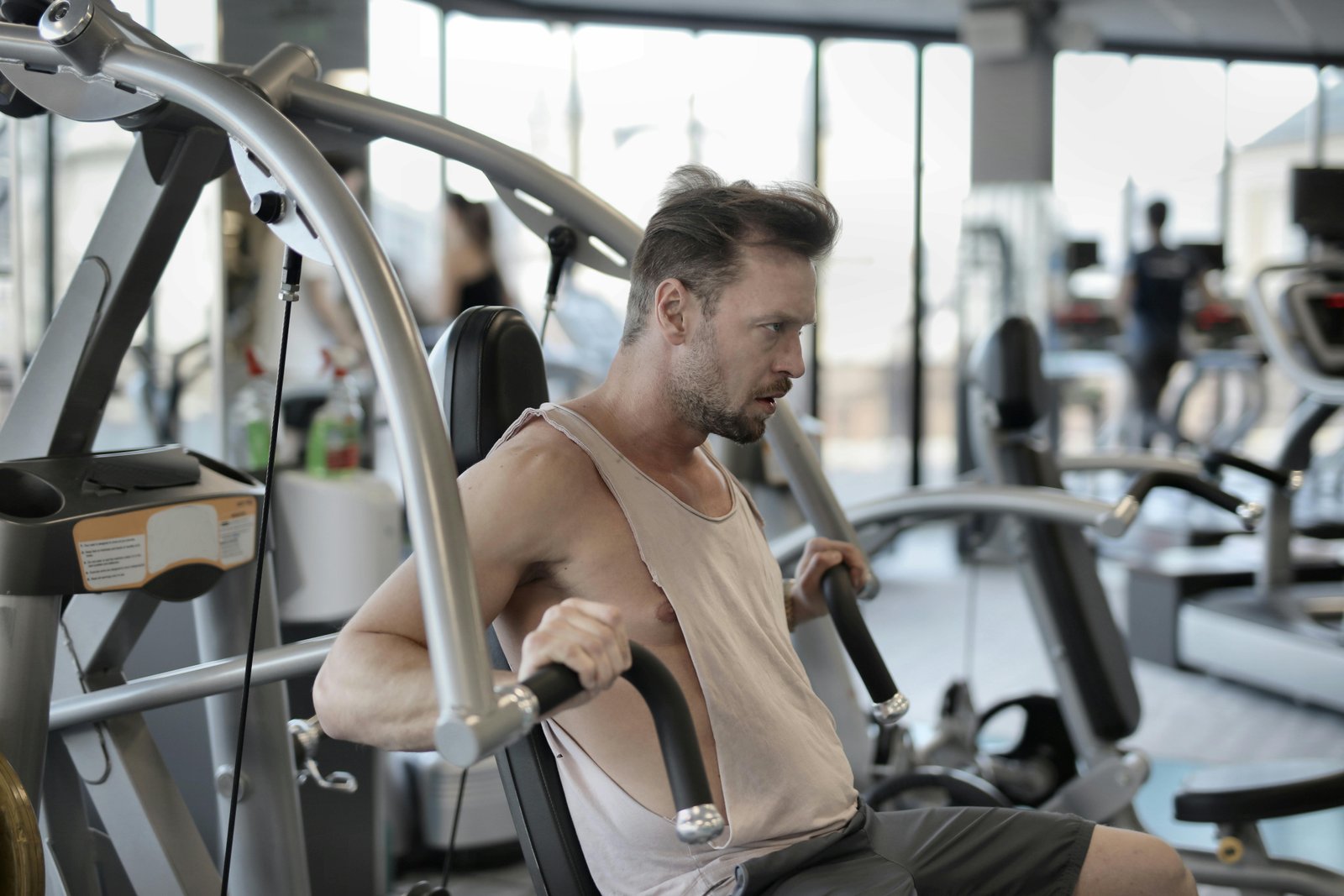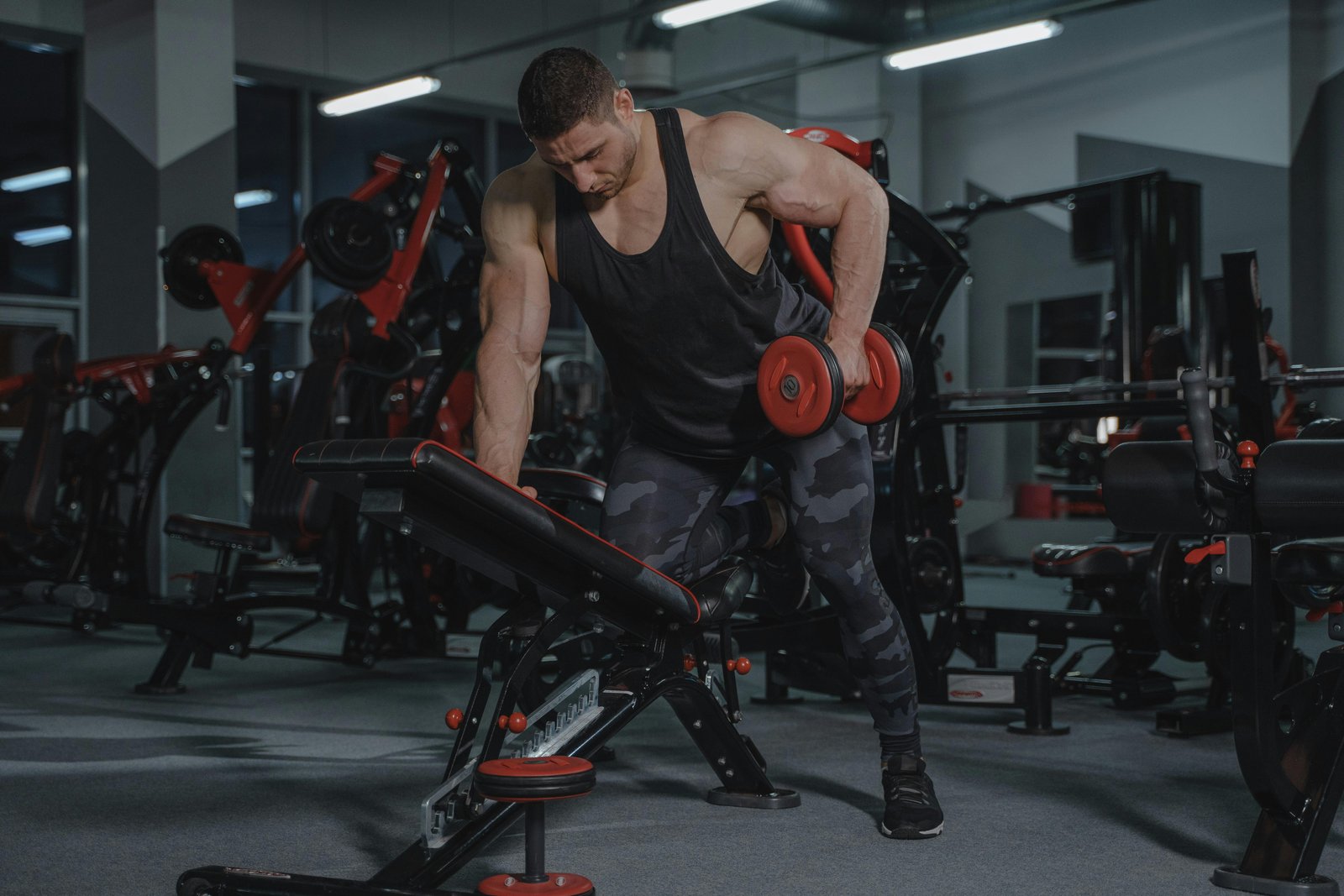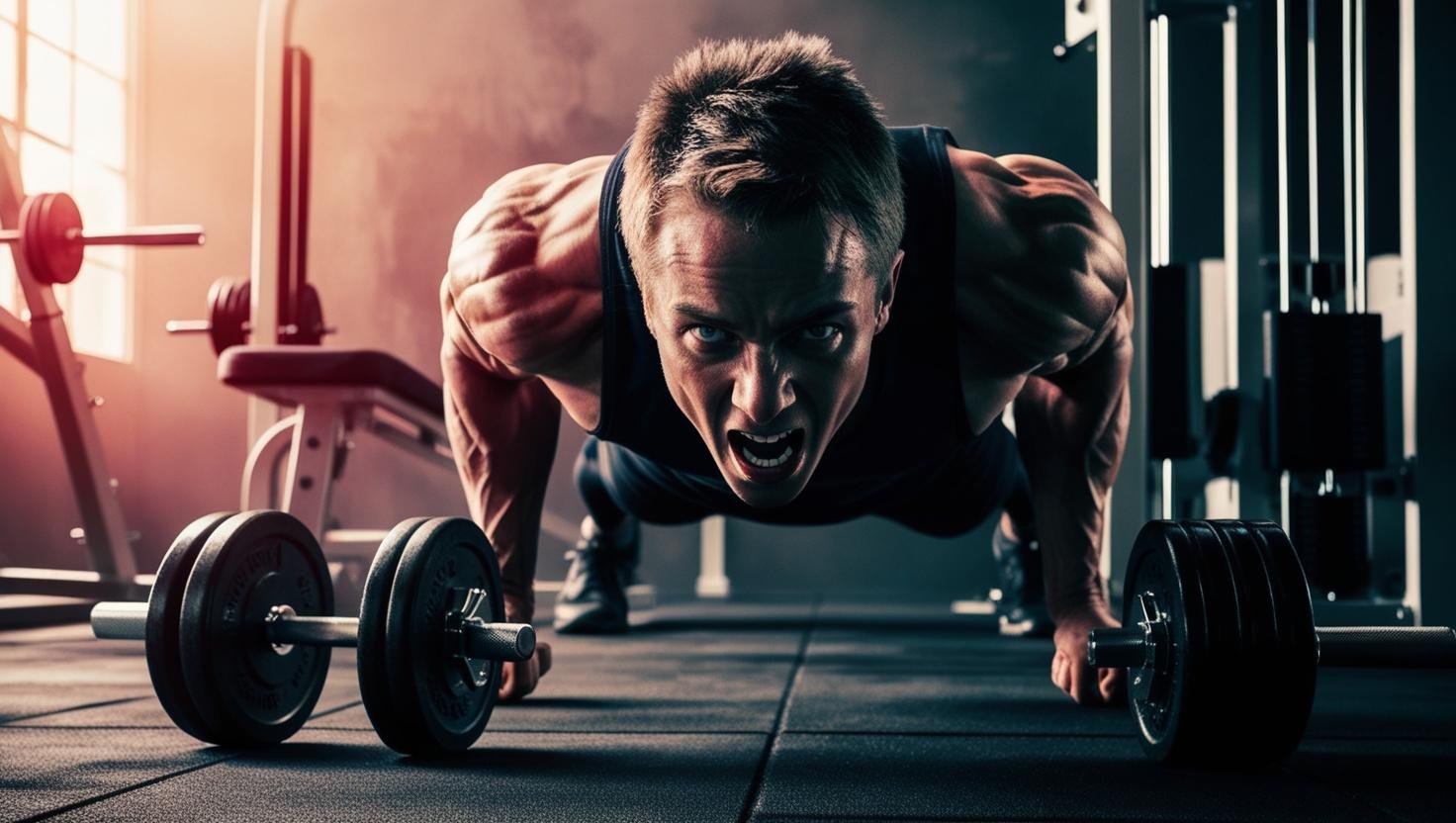Dumbbells vs. Machines: Which is Best? The Shocking Truth for Muscle Growth
When it comes to building muscle, the debate between dumbbells and machines is as old as the gym itself. Both have their pros and cons, but which one is truly better for muscle growth? In this guide, we’ll uncover the shocking truth about dumbbells and machines, backed by science and expert insights. Plus, I’ll share some of my favorite products and supplements to help you maximize your gains.
1. Dumbbells: The Free Weight Advantage
Dumbbells are a versatile and essential tool for building muscle, improving strength, and enhancing functional fitness. Whether you’re looking to target specific muscle groups or perform full-body workouts, dumbbells offer a wide range of benefits that machines can’t match.
Why They’re Great for Muscle Growth
Greater Range of Motion and Muscle Activation
Unlike machines that guide your movements along a fixed path, dumbbells are free weights. This freedom allows for a greater range of motion, which is key for activating more muscle fibers. Research shows that free weights like dumbbells engage more stabilizer muscles than machines, which leads to better overall muscle development and functional strength.
Engages Stabilizer Muscles
When using dumbbells, your body must stabilize itself during each movement. This activates smaller, often overlooked muscles, particularly in the core, shoulders, and wrists. Engaging these stabilizer muscles helps improve balance, coordination, and functional strength, which translates to better performance in daily activities and sports.
Improved Muscle Symmetry
Because dumbbells are used one arm or leg at a time, they can help correct muscle imbalances. If one side of your body is weaker than the other, dumbbells allow you to focus on strengthening the weaker side, promoting muscle symmetry and preventing injury.
Supports Functional Strength
Dumbbells mimic real-life movements more closely than machines, which often isolate muscle groups. The ability to move freely in multiple directions makes dumbbell exercises more functional, preparing you for everyday movements like lifting, bending, or reaching.
How to Use Dumbbells Effectively
For Muscle Growth:
- Focus on performing compound movements like squats, lunges, presses, and rows to work multiple muscle groups at once and stimulate muscle growth.
For Improving Muscle Symmetry:
- Include single-arm and single-leg exercises, such as dumbbell presses, curls, or lunges, to work each side of the body independently.
For Functional Strength:
- Incorporate dynamic exercises like dumbbell snatches, cleans, or farmer’s walks to build strength that directly benefits everyday activities.

Benefits of Using Dumbbells
- Increased Muscle Activation: Engage more muscle fibers than machines, leading to better overall muscle growth.
- Enhanced Functional Strength: Mimic real-life movements to build strength that improves your daily activities.
- Corrects Muscle Imbalances: Work each side of the body independently to improve muscle symmetry.
- Versatility: Suitable for a wide range of exercises, from strength training to flexibility and endurance workouts.
For a structured dumbbell workout plan, expert-led routines are available to guide you through effective exercises for muscle growth, symmetry, and functional strength.
Pro Tip: If you’re short on space, try adjustable dumbbells. They save space and offer a range of weights in one set.
Supplement Suggestion: A protein powder can help your muscles recover and grow stronger after strength training.
2. Machines: Controlled and Isolated Movements
Machines offer a unique advantage for building muscle, especially when it comes to targeting specific muscle groups and improving form. Whether you’re a beginner or an experienced lifter, machines can help you achieve focused muscle growth with controlled and safe movements.
Why They’re Great for Muscle Growth
Isolate Specific Muscle Groups
Machines are designed to target specific muscles, making them perfect for isolating weaker areas or improving strength imbalances. If you’re looking to build up a particular muscle group, machines allow you to focus all of your effort on that muscle without involving other areas of the body.
Controlled Range of Motion for Safer Movements
One of the main benefits of machines is the controlled range of motion they provide. By guiding your movements along a fixed path, machines help ensure proper form, reducing the risk of injury—especially for beginners who may not yet have perfected their technique.
Great for Beginners
For those new to strength training, machines can provide an easy introduction to gym equipment. Since they require less coordination and balance than free weights, machines help build confidence while teaching proper movement patterns. As you gain strength and experience, you can transition to free weights to challenge your muscles in new ways.
Ideal for Injury Recovery
Machines are often recommended for those recovering from injuries. They allow you to target muscles in a controlled manner, which reduces the likelihood of straining or reinjuring a recovering area. This makes machines an excellent tool for rehabilitation and regaining strength after an injury.
How to Use Machines Effectively
For Targeted Muscle Growth:
- Focus on one machine at a time, ensuring you’re isolating the muscle group you want to work (e.g., leg press for quads, chest press for pectorals).
For Beginners:
- Start with lighter weights to master the proper form before increasing intensity. Always check your posture and adjust the machine settings to suit your body.
For Injury Recovery:
- Use machines with lighter resistance to slowly reintroduce movement to a particular muscle group. Be sure to consult with a healthcare professional to choose the right machines for your rehabilitation.

Benefits of Using Machines
- Isolate Target Muscles: Perfect for focusing on specific muscle groups, especially weak points or areas needing improvement.
- Safer for Beginners: Provide a controlled movement, making them easier to use with less risk of improper form or injury.
- Ideal for Injury Recovery: Controlled motion makes it easier to work through rehabilitation safely.
- Consistency and Focus: Guide movements and ensure consistent form, helping you focus on muscle development.
For structured machine-based workout plans, expert-led programs can help guide you through effective routines for strength building, muscle isolation, and recovery.
Pro Tip: If you’re new to machines, try a leg press machine. It’s great for building lower body strength without straining your back.
Supplement Suggestion: A creatine supplement can enhance muscle strength and growth during machine workouts.
3. Dumbbells vs. Machines: The Science Behind Muscle Activation
When it comes to building muscle and achieving fitness goals, both dumbbells and machines have their unique advantages. Understanding how each type of equipment activates muscles can help you make more informed decisions about your workouts.
The Shocking Truth
Dumbbells Activate More Muscle Fibers
Research has shown that dumbbells activate a greater number of muscle fibers compared to machines. This is because dumbbells are free weights, meaning they require more stabilization from supporting muscles to control the movement. Stabilizer muscles—such as those in your core, shoulders, and wrists—are actively engaged when you lift dumbbells, leading to better overall muscle development and functional strength.
By using dumbbells, you’re training your body to work as a unit, improving balance, coordination, and strength. The increased activation of muscle fibers helps you build functional strength that translates to better performance in both everyday tasks and sports.
Machines Are Better for Isolation
While dumbbells engage multiple muscle groups at once, machines are specifically designed to isolate certain muscles. This can be beneficial if you want to target weak points or improve muscle imbalances. For example, using a leg extension machine isolates the quadriceps, allowing you to strengthen the muscles in that specific area without involving other muscle groups.
Machines are also great for beginners, as they guide your movement along a fixed path, ensuring proper form and reducing the risk of injury. This makes machines ideal for those recovering from injuries or looking to target specific muscle groups in a controlled and controlled manner.
How to Use Dumbbells and Machines Together
For Overall Strength and Functionality:
- Incorporate dumbbells into compound movements (e.g., squats, deadlifts, presses) to build functional strength and engage stabilizer muscles.
For Targeted Muscle Development:
- Use machines for isolating specific muscle groups or addressing imbalances (e.g., chest press machine, lat pull-down machine).
For Injury Recovery:
- Use machines for safe, controlled movements during the recovery process, and gradually transition to free weights as strength improves.

Benefits of Using Both Dumbbells and Machines
- Dumbbells: Activate more muscle fibers, build functional strength, and engage stabilizer muscles.
- Machines: Isolate target muscles, reduce the risk of injury, and aid in injury recovery and muscle imbalances.
For optimal results, combining both dumbbells and machines in your routine can give you the best of both worlds: muscle activation from free weights and the ability to isolate muscles for focused development.
Pro Tip: Combine both dumbbells and machines in your routine for balanced muscle growth. For example, use dumbbells for compound lifts like bench presses and machines for isolation exercises like leg extensions.
Supplement Suggestion: A BCAA supplement can help reduce muscle fatigue and improve recovery during mixed workouts.
4. Which Is Better for Beginners?
When you’re just starting out with strength training, the decision between using machines or free weights can be overwhelming. Both types of equipment offer unique benefits, but they cater to different needs and skill levels. Let’s explore which option might be the best for beginners.
The Verdict
Machines: Ideal for Beginners
For those new to strength training, machines are often the better choice. Here’s why:
Controlled Range of Motion: Machines guide your movements along a fixed path, which minimizes the chances of improper form. This makes them a safer option for beginners who may not yet have mastered proper lifting techniques.
Reduced Risk of Injury: The fixed nature of machines helps you avoid the instability that comes with free weights. This lowers the risk of strain or injury, especially when lifting heavy weights for the first time.
Builds Confidence: Since machines provide more support and require less coordination, they can help you build confidence in your strength training abilities. Beginners can learn the basics of exercise form and movement patterns in a controlled environment before advancing to more complex exercises.
Focus on Proper Form: For beginners, machines allow you to focus on isolating specific muscles without the need to worry about stabilizing or balancing the weight. This helps establish a solid foundation of form before transitioning to free weights like dumbbells.
How to Transition from Machines to Free Weights
Start with Machines: Begin with machines to get comfortable with the exercises and learn the right movements. For example, use a leg press machine, chest press machine, or lat pull-down machine to work major muscle groups.
Incorporate Dumbbells Gradually: As you build strength and confidence, gradually introduce dumbbells into your routine. Start with light weights and focus on compound movements like squats, lunges, and presses to activate multiple muscle groups.
Combine Both for a Balanced Routine: Once you’re more comfortable with free weights, a combination of machine exercises and dumbbells will help ensure full-body strength and balanced development.

Benefits of Machines for Beginners
- Safer Movements: Machines provide more guidance and reduce the risk of injury.
- Easier to Learn Proper Form: Machines help beginners establish correct posture and movement patterns before progressing.
- Confidence Boosting: Less coordination is required, which can help beginners feel more comfortable in the gym.
Common Mistakes to Avoid as a Beginner
Skipping Warm-Up and Cool-Down
- Never skip your warm-up before starting machine exercises. A good warm-up prepares your muscles and joints for movement, and cooling down helps with recovery.
Using Too Much Weight Too Soon
- It’s tempting to lift heavy right away, but focusing on proper form and gradually increasing weight is more important in the long run. Start light and increase the resistance as your confidence and strength grow.
Neglecting Full-Body Exercises
- While machines target specific muscles, don’t forget to incorporate compound movements that work multiple muscle groups for balanced development.
Ignoring Progression to Free Weights
- Don’t stick to machines forever. As you gain experience, it’s important to challenge your body with free weights to engage stabilizer muscles and improve overall strength.
Pro Tip: Start with machines for the first 4-6 weeks, then gradually incorporate dumbbells into your routine.
Supplement Suggestion: A multivitamin can support overall health and energy levels as you build your fitness foundation.
5. Which Is Better for Advanced Lifters?
For advanced lifters, the choice between dumbbells and machines often depends on training goals and the desire to push physical limits. While both types of equipment have their place, the following factors can help determine which one is more beneficial for those at an advanced fitness level.
The Verdict
Dumbbells: Ideal for Advanced Lifters
For advanced lifters, dumbbells are often the better choice. Here’s why:
Greater Range of Motion: Dumbbells allow for a larger range of motion compared to machines, helping to activate more muscle fibers throughout each movement. This range is crucial for maximizing muscle development and functional strength.
Engage More Muscle Fibers: Unlike machines, which guide your movements along a fixed path, dumbbells require you to stabilize the weight through multiple planes of motion. This engages not only the target muscles but also smaller stabilizer muscles, leading to a more comprehensive and effective workout.
Versatility for Complex Movements: Dumbbells allow for greater versatility in exercise selection. From compound lifts like bench presses and squats to unilateral exercises like lunges or dumbbell snatches, the variety of movements you can perform with dumbbells supports progress in strength, power, and hypertrophy.
Progressive Overload: Advanced lifters need to progressively overload their muscles to continue making gains. Dumbbells are ideal for this, as they offer more granular increments in weight compared to most machines, allowing for more controlled and consistent progression.
How to Maximize Your Dumbbell Workouts
Focus on Compound Movements: Incorporate exercises like dumbbell squats, deadlifts, presses, and rows to engage multiple muscle groups and build strength.
Use Unilateral Exercises: Implement one-sided movements like single-arm dumbbell presses or lunges to address imbalances and target muscles individually.
Progressive Overload: Gradually increase the weight or reps with dumbbells over time to continue challenging your muscles and making progress.

Benefits of Dumbbells for Advanced Lifters
- Larger Range of Motion: Maximizes muscle activation by allowing more movement flexibility.
- Engages More Muscle Fibers: Works stabilizers and target muscles for better muscle development and functional strength.
- Versatility: Suitable for a wide range of exercises, from strength training to explosive movements.
- Supports Progressive Overload: Offers more precise weight increments to help you steadily increase intensity and challenge your muscles.
Common Mistakes to Avoid for Advanced Lifters
Using Too Heavy a Weight Too Soon
- While it’s important to challenge yourself, always ensure you maintain proper form. Lifting too heavy without control can lead to injury.
Neglecting Warm-Up and Cool-Down
- Never skip your warm-up before heavy lifting. A dynamic warm-up prepares your muscles for the intensity of the workout and reduces the risk of injury.
Not Incorporating Variety
- Don’t rely solely on one type of exercise or equipment. Mixing dumbbells with machines or bodyweight exercises can prevent plateaus and keep your workouts balanced.
Forgetting Rest and Recovery
- Overtraining without proper recovery can hinder progress. Be sure to give your muscles time to recover and adapt to your advanced workouts.
Pro Tip: Use machines to target weak points or add variety to your routine, but focus on dumbbells for compound lifts.
Supplement Suggestion: A pre-workout supplement can give you the energy and focus you need for intense dumbbell workouts.
6. The Best of Both Worlds: Combining Dumbbells and Machines
Maximizing muscle growth and achieving your fitness goals doesn’t have to be about choosing between dumbbells or machines. In fact, combining both in your routine can provide a comprehensive workout that targets all aspects of strength training. By using each for its unique benefits, you can develop functional strength while also isolating muscles for focused growth.
Why It Works
Dumbbells for Compound Movements
Dumbbells are excellent for compound exercises because they engage multiple muscle groups at once. Movements like squats, deadlifts, and presses recruit a variety of muscles, helping to improve overall strength and muscle coordination. These exercises require stabilizer muscles to maintain balance and control, leading to greater functional strength that carries over into real-life activities.
Machines for Isolation Exercises
On the other hand, machines are designed to isolate specific muscle groups, allowing you to target weak points and improve muscle imbalances. By isolating muscles with machines, you can focus on building mass in specific areas, such as the chest, back, or legs. Machines are especially beneficial for beginners or those recovering from injury because they guide the movement and ensure proper form.
Sample Routine
A balanced workout routine that combines both dumbbells and machines ensures you get the best of both worlds. Here’s a sample routine:
Dumbbells (Compound Movements):
- Bench Press (targets chest, shoulders, triceps)
- Squats (targets quads, hamstrings, glutes)
- Deadlifts (targets hamstrings, glutes, lower back, core)
Machines (Isolation Exercises):
- Leg Press (isolates quads, hamstrings, glutes)
- Lat Pulldown (isolates lats, biceps)
- Chest Fly (isolates chest muscles)

Benefits of Combining Dumbbells and Machines
- Maximize Muscle Activation: Dumbbells engage multiple muscle groups while machines help target specific muscles for more balanced growth.
- Efficient and Effective: Combining compound movements with isolation exercises allows you to work all major muscle groups in a single workout, optimizing your time in the gym.
- Prevent Plateaus: Using a mix of both types of equipment ensures you constantly challenge your muscles in different ways, helping to avoid plateaus in progress.
- Target Weak Points: Machines are great for addressing muscle imbalances or weak points that may not be as effectively targeted with compound movements alone.
Common Mistakes to Avoid
Relying Too Much on Machines
- While machines are useful for isolating muscles, don’t neglect compound movements with dumbbells, as these are crucial for overall strength and muscle coordination.
Not Varying Your Routine
- Don’t stick to the same exercises week after week. Varying your exercises and equipment keeps your muscles challenged and promotes consistent progress.
Overlooking Full-Body Workouts
- Be sure to include both upper and lower body exercises in your routine. A well-rounded workout will improve muscle balance and overall performance.
Pro Tip: Alternate between dumbbells and machines each week to keep your workouts fresh and challenging.
Supplement Suggestion: A post-workout recovery supplement can help your muscles recover faster after mixed workouts.
Product Recommendations
Here are some of my top picks to help you maximize muscle growth:
- Adjustable Dumbbells: Perfect for space-saving strength training.
- Leg Press Machine: Great for building lower body strength.
- Protein Powder: Supports muscle recovery and growth.
- Creatine Supplement: Enhances muscle strength and performance.
Pre-Workout Supplement: Boosts energy and focus for intense workouts.
Conclusion
Both dumbbells and machines have their place in a muscle-building routine. Dumbbells are better for functional strength and compound movements, while machines are ideal for isolation exercises and controlled movements. By combining both, you can achieve balanced muscle growth and maximize your results. Remember, consistency and proper form are key—choose the tools that work best for your goals and fitness level!
Disclaimer
Some of the links in this post are affiliate links, which means I may earn a small commission if you purchase through them. This comes at no extra cost to you and helps support the creation of free, valuable content like this. Thank you for your support!
